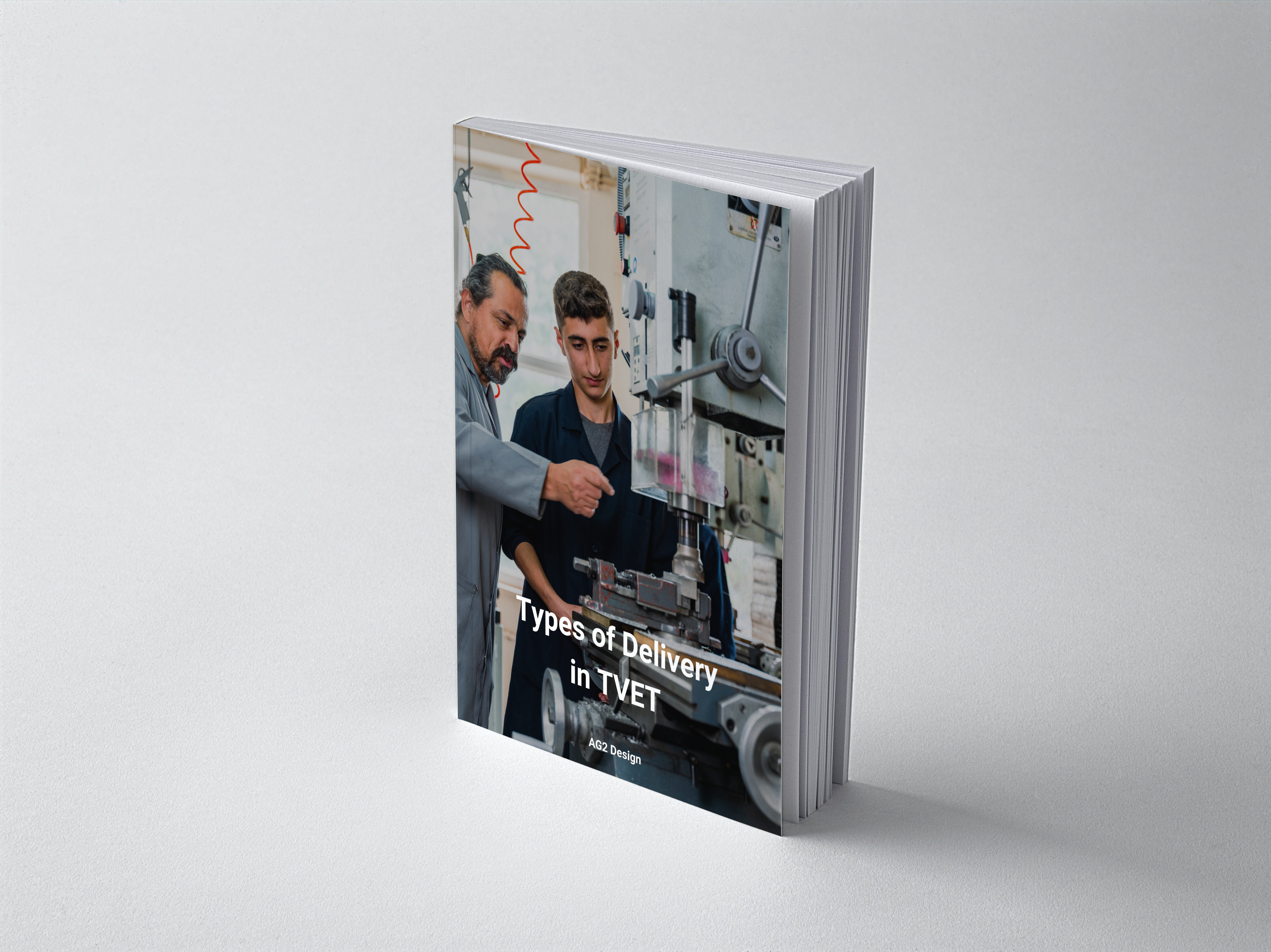Staying ahead of the curve is essential in Technical and Vocational Education and Training (TVET). The delivery methods we choose significantly impact not only learning outcomes but also the accessibility and inclusivity of educational programmes. Recognising this, we are thrilled to introduce our new free eBook, “Types of Delivery in TVET: Benefits and Drawbacks,” a comprehensive guide designed to help educators, trainers, and policymakers navigate the complex landscape of TVET delivery.
Why This eBook Matters
As we move into the 21st century, the need for skilled workers has never been greater. TVET equips individuals with the practical skills and knowledge required to succeed in various industries. However, the effectiveness of TVET programmes hinges on the delivery methods employed. Our eBook explores four primary delivery methods: face-to-face, remote, blended, and digital. Each method is analysed, offering insights into its unique benefits and potential challenges.
- Face-to-Face Delivery: The Traditional Bedrock – Face-to-face delivery remains a cornerstone of TVET, providing an immersive and interactive learning environment. This method encourages direct interaction between instructors and learners, allowing for immediate feedback and hands-on experience—key components in technical education. However, it is resource-intensive and may not be accessible to all, especially those in remote or underserved areas.
- Remote Delivery: Breaking Down Barriers – With the advent of digital technologies, remote delivery has revolutionised how education is accessed. It offers unparalleled flexibility, enabling learners to engage with educational content from virtually anywhere. This method is particularly beneficial for working professionals, parents, and individuals in rural areas. Despite its advantages, remote delivery faces challenges such as ensuring reliable internet access and maintaining learner engagement.
- Blended Delivery: The Best of Both Worlds – Blended delivery combines the strengths of face-to-face and remote learning, offering a versatile and adaptive educational framework. This approach caters to diverse learning preferences, enhancing the overall learning experience. While implementing blended learning requires careful planning and significant resources, its potential to improve educational outcomes makes it an attractive option for modern TVET institutions.
- Digital Delivery: Embracing Innovation – Digital delivery utilises innovative tools and platforms to create engaging and cost-effective learning experiences. This method caters to various learning styles and can significantly reduce educational costs from virtual simulations to gamified learning modules. However, addressing the digital divide and ensuring all learners access the necessary technologies is essential for successfully implementing digital delivery.
Download Your Copy Today
Whether you are an educator seeking to enhance your teaching strategies, a trainer looking to improve learner outcomes, or a policymaker aiming to develop robust educational frameworks, our eBook is invaluable. Equip yourself with the knowledge and tools to navigate the complexities of TVET delivery and unlock the full potential of your educational programmes.

A Balanced Perspective
Our eBook provides a balanced perspective on each delivery method, offering practical decision-making frameworks to help educators and policymakers implement effective and inclusive TVET programmes. By understanding the benefits and drawbacks of each method, stakeholders can make informed decisions that align with their institutional capabilities and learner needs.
Why You Should Download This eBook
- Comprehensive Analysis: Gain insights into the strengths and challenges of face-to-face, remote, blended, and digital delivery methods.
- Practical Frameworks: Access decision-making frameworks that help you choose the best delivery method for your TVET programme.
- Expert Insights: Benefit from the expertise of industry professionals and educational researchers who contributed to this guide.
- Stay ahead by implementing the most effective and inclusive delivery methods in the ever-changing education landscape.
Join the Conversation We’d love to hear your thoughts on the different delivery methods in TVET. Join the conversation on social media using #TVETDelivery and share your experiences and insights. Together, we can shape the future of technical and vocational education.



